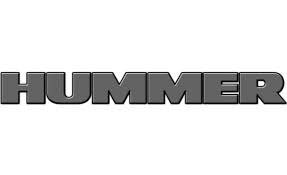H2 V8-6.2L (2008)

Repairs and Inspections Required After a Collision: Service and Repair
Seat Belts
Repairs and Inspections Required After A Collision
Repairs and Inspections Required After a Collision
Caution: Restraint systems can be damaged in a collision. To help avoid injury and ensure that all parts in need of replacement are replaced:
*
Replace any seat belt system that was in use during the collision serious enough to deploy any automatic restraint device such as air bags and seat
belt pretensioners. This not only includes seat belt systems in use by people of adult size, but seat belt systems used to secure child restraints,
infant carriers and booster seats, including LATCH system and top tether anchorages.
*
Replace any seat belt system that has torn, worn, or damaged components. This not only includes adult seat belt systems, but built-in child
restraints and LATCH system components, if any.
*
Replace any seat belt system if you observe the words "REPLACE" or "CAUTION", or if a yellow tag is visible. Do not replace a seat belt if only
the child seat caution label is visible.
*
Replace any seat belt system if you are doubtful about its condition. This not only includes adult seat belt systems, but built-in child restraints,
LATCH system components, and any restraint system used to secure infant carriers, child restraints, and booster seats.
Do NOT replace single seat belt system components in vehicles that have been in a collision as described above. Always replace the entire seat belt
system with the buckle, guide and retractor assembly, which includes the latch and webbing material.
After a minor collision where no automatic restraint device was deployed, seat belt system replacement may not be necessary, unless some of the parts
are torn, worn, or damaged.
Operational and Functional Checks
Operational and Functional Checks
Important: If the vehicle has been in a collision, refer to Repairs and Inspections Required After a Collision (See: ) for additional information.
Perform the following inspection from the driver seat:
1. Turn the ignition switch to the ON position. Verify proper operation of the seat belt reminder lamp with the belt buckled and with the belt
unbuckled.
2. Inspect the shoulder belt guide in order to ensure that the following conditions are met:
*
The shoulder belt guide swivels freely.
*
The seat belt webbing is seated flatly in the guide slot.
*
The seat belt webbing does not bind.
3. Verify that the seat belt buckle faces inboard and is accessible.
4. Verify that the seat belt retractor units are securely attached.
5. Verify that the seat belt anchor bolts are secure.
6. Fully extend the seat belt webbing. Verify that the seat belt webbing does not have any twists or tears.
7. Allow the seat belt webbing to retract. Verify that the seat belt webbing returns freely and completely back into the retractor. If the seat belt
webbing will not retract, refer to Seat Belt Does Not Retract (See: Seat Belt Systems/Testing and Inspection/Symptom Related Diagnostic
Procedures/Seat Belt Does Not Retract) .
8. Snap the seat belt latch plate into the buckle.
9. Sharply tug on the seat belt latch plate and the buckle. Verify that the seat belt latch plate and the buckle remain locked when tugged.
10. Push the button on the buckle:
*
Verify that the seat belt latch plate releases easily from the buckle.
*
Verify that the button returns to its original position.
Repeat the inspection procedure, steps 2-10, from the front passenger seat.
Test the function of the automatic locking child restraint feature:
1. To engage the automatic locking feature, pull the belt to the fully extended position. Allow the belt to retract to the proper position for the child
seat and fasten the latch plate to the buckle. As the belt retracts, a ratcheting sound should be heard.
2. To disengage the automatic locking feature, allow the belt to retract to the fully stowed position. Before the belt is completely stowed, the cinch
feature will reset, the ratcheting sound will stop and the belt will extract freely.
